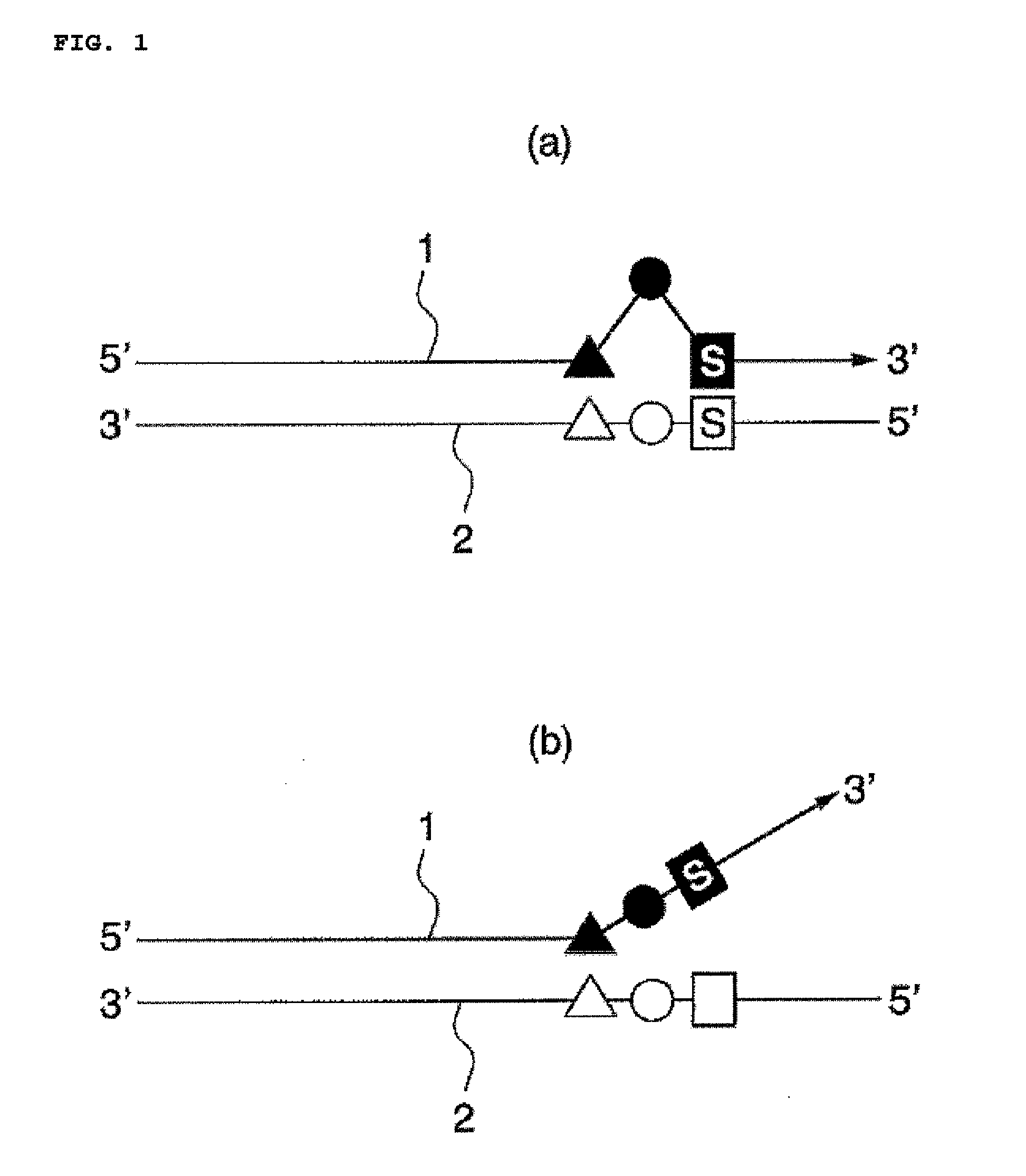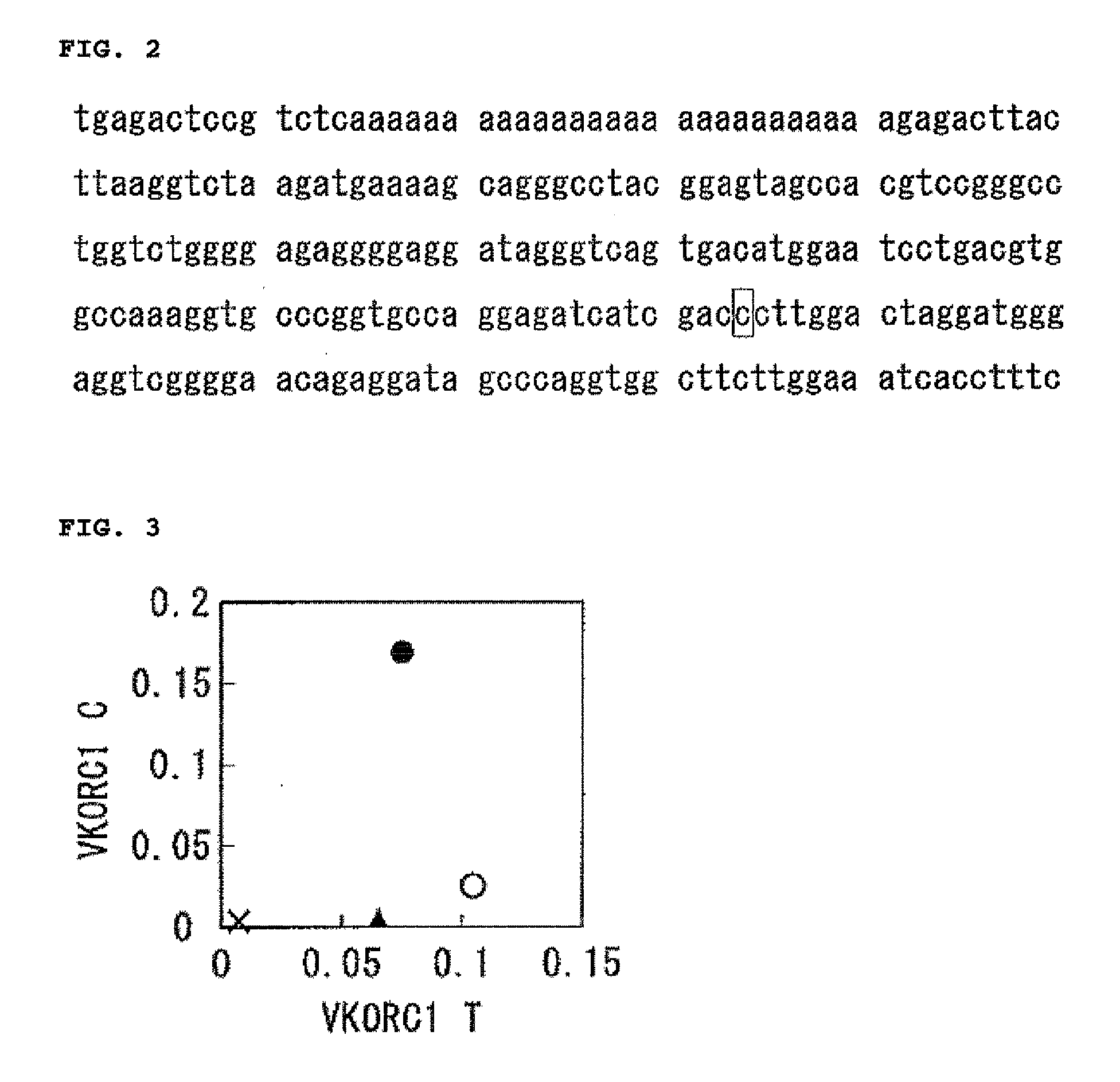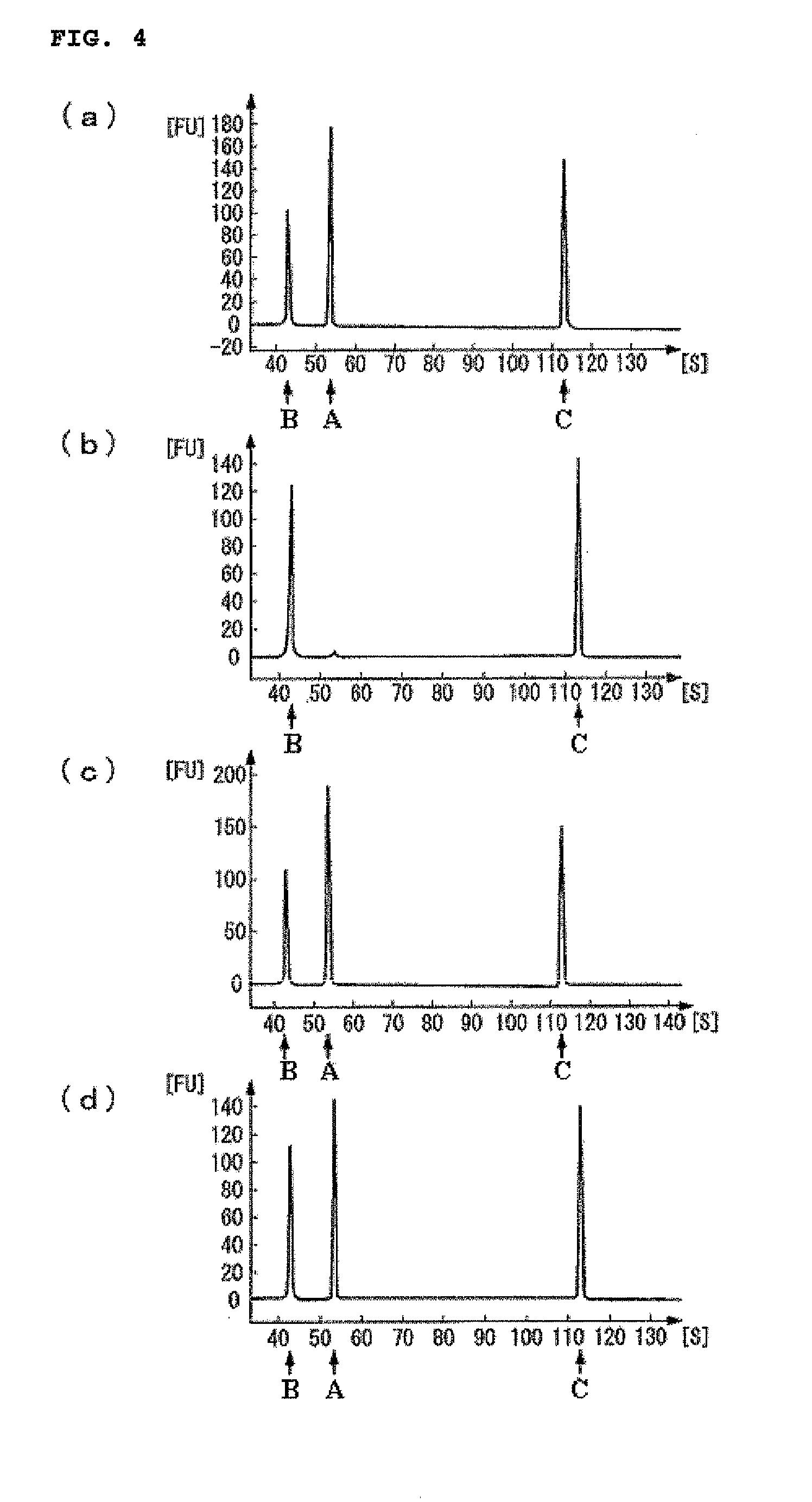Target base discrimination method
a target base and discrimination method technology, applied in the field of target base specific primers, can solve problems such as false positives, and achieve the effect of sufficiently high nucleic acid extension reaction efficiency and sufficiently high discrimination ability for target bases
- Summary
- Abstract
- Description
- Claims
- Application Information
AI Technical Summary
Benefits of technology
Problems solved by technology
Method used
Image
Examples
examples
[0082]Next is a more detailed description of the present invention with reference to Examples. However, the present invention is not to be considered as being limited by the following Examples.
Preparation of Primers for Producing Template DNA
[0083]The template DNA was made by mutagenesis based on the pUC19 DNA (manufactured by TaKaRa Bio) with the GeneTailor Site-Directed Mutagenesis System (manufactured by Invitrogen). Primers used for the mutagenesis consisted of a mutated forward primer and a normal reverse primer. The reverse primer used herein was the Mi-R that was in common to every forward primer. Moreover, the forward primers were divided into two major groups consisting of the Mi-F-uXX (XX stands for a combination of two types of bases) series for examining the influence of the mismatch from the 3′ side, and the Mi-F-dXX (XX stands for a combination of two types of bases) series for examining the influence from the 5′ side. Each pUC19 DNA was differentially mutated by respe...
PUM
| Property | Measurement | Unit |
|---|---|---|
| temperature | aaaaa | aaaaa |
| temperature | aaaaa | aaaaa |
| volume | aaaaa | aaaaa |
Abstract
Description
Claims
Application Information
 Login to View More
Login to View More - R&D
- Intellectual Property
- Life Sciences
- Materials
- Tech Scout
- Unparalleled Data Quality
- Higher Quality Content
- 60% Fewer Hallucinations
Browse by: Latest US Patents, China's latest patents, Technical Efficacy Thesaurus, Application Domain, Technology Topic, Popular Technical Reports.
© 2025 PatSnap. All rights reserved.Legal|Privacy policy|Modern Slavery Act Transparency Statement|Sitemap|About US| Contact US: help@patsnap.com



